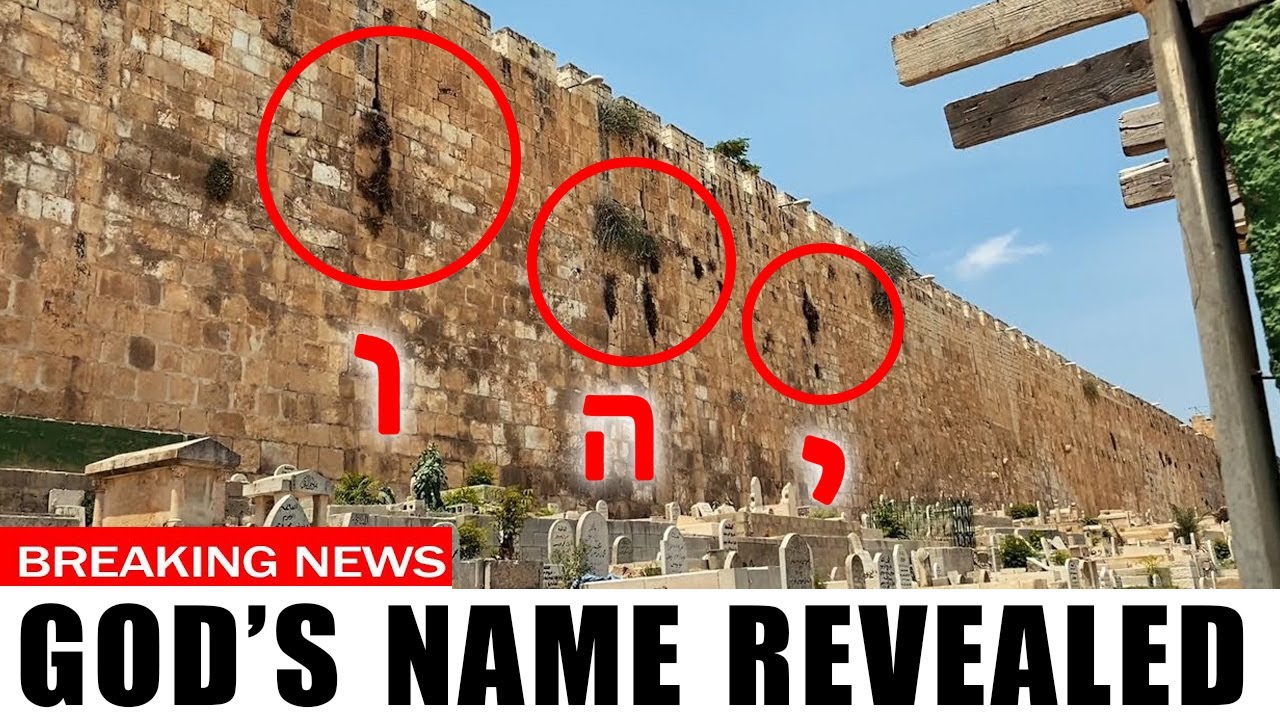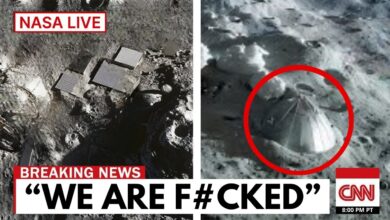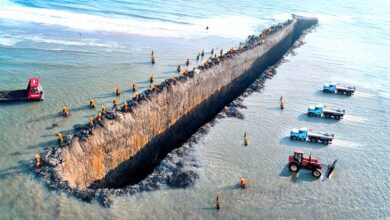God’s Name FOUND on Jerusalem’s Wall Near the Golden Gate – End Times Prophecy Fulfilled?

This is the moment of reckoning. You must show the world what is unfolding – Yahweh, the name of God, appears to be inscribed upon the eastern wall of the Temple Mount. Above the Eastern Gate of Jerusalem – sealed for centuries, shrouded in silence – a strange formation has begun to emerge. At first glance, it looks like a shadow, a crack, perhaps a mere coincidence of nature. But upon closer inspection, the shape seems to form something sacred, something divine – the Tetragrammaton, four ancient Hebrew letters: Yod, Hey, Vav, Hey – the name of the Most High. If this is real, its implications are beyond imagination. Could this be a sign not carved by human hands, but etched by the hand of God?
Prophets once foretold that signs would rise from the stones, that the earth itself would testify to the presence of the Divine. And now, beneath the scorching Middle Eastern sun, an ancient gate may be whispering eternity. Join us as we journey through prophecy, archaeology, and sacred mystery.
At the Eastern Gate – the Golden Gate of Jerusalem, sealed shut for generations and steeped in prophetic weight – something is drawing the gaze of pilgrims, scholars, and spiritual seekers alike. Not with trumpets or headlines, but with a whisper – a subtle shift in ancient limestone. From a distance, it seems unremarkable – perhaps a stain from rain, wind, or time. But those who step closer, who observe with intent, begin to see something that defies mere coincidence. The stain gives way to structure. The randomness reveals shape. Four characters appear – not just any, but YHWH – Yahweh.
What’s astonishing is that there are no carvings, no chisel marks, no paint, no evidence of human hands. The letters seem to be shaped by time itself, by erosion, by mineral deposits – by forces beyond human control or design. Skeptics call it pareidolia – the brain’s tendency to find familiar shapes in chaos. But this is not just any wall, and this is not just any name. This is the Eastern Gate – the only gate, according to ancient Jewish and Christian prophecy, through which the Messiah is said to return.
Could this be a message not spoken aloud, but carved in silence? In a time of global unrest, spiritual awakening, and growing wonder, this sign may not be an accident. It may be a testimony, a divine signal – not of man’s presence, but of God’s. In the Bible, when God establishes a covenant, He writes in stone. So if His name is truly emerging on the wall of Jerusalem, the meaning is profound.
Jerusalem – the city marked by heaven. A city whose hills echo with the breath of prophets and psalms, whose stones are soaked in tears, prayer, and blood. For over three millennia, Jerusalem has stood not only as a geopolitical battlefield, but as a spiritual axis – a meeting point between heaven and earth. This is the place where Abraham nearly offered Isaac as a sacrifice, where David established his throne and danced before the Ark of the Covenant, where Solomon built a temple unlike any other in majesty and holiness. And centuries later, this is where Jesus walked, taught, wept, died, and rose again.
But beyond these sacred stories lies a deeper claim – a divine imprint. After Solomon completed the first temple, God appeared and said, in 1 Kings 9:3:
“I have consecrated this temple, which you have built, by putting My name there forever. My eyes and My heart will always be there.”
This wasn’t metaphor. It was a promise. God’s name was placed in this city. And what does that mean? That regardless of who rules or invades, who builds or destroys – God’s attention, His eyes and heart, remain here. For centuries, that name was believed to be spiritual, unseen. But now, as the ancient Eastern Gate begins to bear the physical letters of YHWH, a question rises:
Could this be the visible sign of an invisible covenant?
The Eastern Gate – the Golden Gate – is the only eastern-facing entrance to the Temple Mount. It faces directly toward the Mount of Olives, precisely aligned with the prophetic geography described in the Hebrew scriptures. In Ezekiel 44, the prophet speaks of the glory of the Lord entering the temple from the east. In Zechariah 14, it is said that the Lord’s feet will stand upon the Mount of Olives, splitting it in two as He returns in power. These aren’t poetic metaphors – they point to a specific route, a divine path of re-entry.
That’s why for centuries, the Eastern Gate has held messianic expectation. Tradition says that when the Messiah comes, He will pass through this very gate, enter the city, and restore all things. But in the 16th century, Suleiman the Magnificent, the Ottoman ruler, ordered the gate to be sealed with massive stone blocks – after hearing of the Jewish prophecy and attempting to stop it. To further defy the prophecy, a Muslim cemetery was established in front of the gate, aiming to make the area ritually impure for any priestly figure.
But even sealed, the gate has not been forgotten. It stands – silent, watching, waiting. Every year, pilgrims walk the Kidron Valley, retracing the path from Gethsemane to the Temple Mount – the very path Jesus took during His triumphal entry, fulfilling Zechariah 9:9: “Behold, your King comes to you, lowly and riding on a donkey.”
The Eastern Gate, though shut, remains a portal in waiting. And now, as the name of God begins to appear upon it, that waiting feels more like a countdown. The stones, it seems, were never silent. They have been speaking all along.








